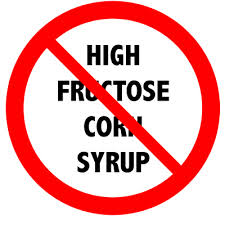
19 May To Your Health: Sugar, Not Such a Sweet Story
Editor’s Note: It all started with a Wellness Conference that took place in March at The Peaks Resort & Spa. The talks featured part-time Telluride local Dr. Alan Safdi, who offered evidence-based medical findings for healthy living in easily digestible sound bytes. The series was so popular, Dr. Safdi and Peaks’ General Manager, Dave Ciani, plan to continue talks this summer. In the meantime, in between times, Telluride Inside… and Out continues to offer nuggets from Dr. Safdi through a new bi-monthy column, “To Your Health.”
Things are not so sweet for sugar. In fact, sugar has gotten a bad name over the last several years. But is the rap deserved?
First of all, there are many types of sugars: simple sugars such as high fructose corn syrup (HFCS) and table sugar and the complex sugars we get from eating vegetables.
Complex sugars are slowly absorbed, metabolized more slowly, and combined in higher fiber foods. That’s why they are much better for you, plus the fact they typically have a much lower glycemic index. As a result of the manufacturing process for high-fructose corn syrup, the molecules in the sweetener are free and unbound, ready for immediate absorption and utilization. In contrast, every fructose molecule in sucrose that comes from cane sugar or beet sugar is bound to a corresponding glucose molecule and must go through an extra metabolic step before it can be utilized. What does that mean to a human?
Read on to see why sugars are not all equal.
American adults get, on average, about 13 percent of their daily calories from added sugar, according to a report from the Centers for Disease Control. Men average 335 calories a day from added sugar; women 239 calories. One-third of these calories come from soft drinks. The only bright spot in that picture is that intake is down somewhat from 15 years ago, largely because of reduced consumption of regular soda and other sweetened beverages. The American Heart Association advises that men limit added sugars to 150 calories (about 9 teaspoons) a day, and women to 100 calories (6 teaspoons) a day.
In my opinion we should avoid almost any amount of high fructose corn syrup.
HFCS, a sugar substitute, is ubiquitous in processed foods and beverages, including soft drinks, yogurt, industrial bread, cookies, salad dressing, and tomato soup. Glucose can be used by all the cells in our body, but fructose can only be metabolized in our liver. What does that cause? Daily consumption of fructose – the sugar commonly found in soft drinks – significantly increases liver scarring and damage in patients with nonalcoholic fatty liver disease.
We have linked both obesity and a fatty liver to increased consumption of high-fructose corn syrup, particularly soft drinks. In animal models, fructose induces rapid development of fatty liver and associated insulin resistance, microvascular disease, and inflammation.
In a Princeton University study, rats became obese by drinking high fructose corn syrup – but not by drinking sucrose (table sugar). The critical differences in appetite, metabolism and gene expression that underlie this phenomenon are yet to be discovered, but may relate to the fact that excess fructose is being metabolized to produce fat, while glucose is largely being processed for energy or stored as a carbohydrate, called glycogen, in the liver and muscles.
If this is not evidence enough for you to try and completely avoid HFCS and added sugars consider the following fact from another study: people who took in excessive amounts of added sugar in their diet carried greater risks of dying from cardiovascular disease (CVD), researchers found.
Through a median follow-up of nearly 15 years, those who had 10% to 24.9% of calories come from added sugar were 30% more likely to experience cardiovascular death than those with less than 10%. In addition, the risk of death during the follow-up period jumped greatly — to 175% — for those getting 25% or more of their calories from added sugar.
The study underscores the likelihood that, at levels of consumption common among Americans, added sugar is a significant risk factor for cardiovascular disease mortality – above and beyond the fact of absorbing empty calories leading to weight gain and obesity.
Remember the risk of cardiovascular mortality started to increase when intake of added sugar reached 15% of daily calories, which is equivalent to drinking one 20-ounce Mountain Dew soda in a 2,000-calorie daily diet.
So why am I such a staunch believer in avoiding excess amounts of added simple sugars? Observational studies have established a link between eating more added sugar (mostly in the form of sugar-sweetened beverages) and poorer cardiovascular health, including increased weight gain and greater risks of obesity, Type 2 diabetes, increased lipids, hypertension, and cardiovascular disease.
Enough said?
About Dr. Alan Safdi:
Dr. Alan Safdi is board certified in Internal Medicine and in Gastroenterology and is a Fellow of the American College of Gastroenterology. He is the past Chairman of the Department of Gastroenterology at the Deaconess Hospital and current Chairman of the Ohio GI and Liver Institute. A proven leader in the healthcare arena, he has been featured on the national program, “Medical Crossfire” and authored or co-authored numerous medical articles and abstracts. Safdi has been involved in grant-based and clinical research for over 33 years and is passionate about disease prevention and wellness, not just fixing what has gone wrong. He is an international lecturer on the subjects of wellness, nutrition and gastroenterology.






Sorry, the comment form is closed at this time.